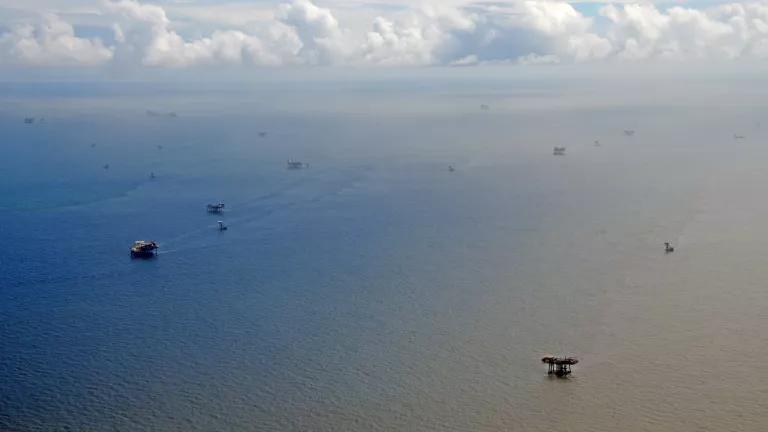
Instead of plastic litter, the beach was strewn with happy kids.
Thursday, May 19 was the 23rd annual Kids Ocean Day Adopt-A-Beach Cleanup at Dockweiler State Beach in Playa Vista, California, and more than 4,000 Los Angeles students came together to clear the beach of trash and create an aerial art mosaic in the sand.
“Most of them already know that the trash on the street ends up in the ocean,” said Kids Ocean Day founder Michael Klubock. “Kids Ocean Day helps make them aware that they can have an impact. It expands their world when they learn that they can do something to protect the ocean they love.”
The one-day event is part of a year-long program by the Malibu Foundation for Environmental Education that teaches kids about our shared ocean resources, and how litter reduction and recycling can improve the health of the marine environment. Six Kids Ocean Day events take place in California communities, sponsored by the California Coastal Commission.
There is a scourge of plastic pollution in our seas—an estimated 20 million tons of plastic litter entering the ocean each year, polluting the water and entangling and choking marine life including seabirds, whales, sea turtles and fish. Vast “garbage patches” of plastic waste blight areas of the Pacific Ocean. And this plastic pollution is only getting worse.

About 80 percent of marine litter originates on land, from beach debris to litter that washes into storm drains during heavy rains. Plastic bags make up a large amount of plastic waste, as they are easily caught in the wind and can blow long distances until they land in a stream, river or the ocean. So, while responsible citizens like these Los Angeles kids work hard to clean up plastic trash, no one can truly stem the plastic tide unless we can reduce this pollution at its source.
On an individual level, consider taking actions such as those outlined in this blog post by my colleague Sarah Engler as a way of reducing plastic consumption.
Together, we can also work to encourage single-use plastic manufacturers to take greater responsibility for their products, and to codify this change in common sense laws that reduce plastic pollution. Some highlights of NRDC’s work to reduce plastic pollution in our oceans include:
- Supporting bans on the sale of plastic microbeads in personal care products, such as soap, shampoo and toothpaste in California and New York City. Federal microbeads legislation was also passed in January 2016.
- Working with a broad coalition to pass bag bans in California and New York. (Hawaii was the first state to pass a ban on single-use plastic bags.) It is estimated that Californians use over 13 billion plastic bags each year. Along with the devastating effects to ocean life, cleaning up plastic bags is a financial burden to the public. The EPA estimates West Coast communities spend over a half billion dollars each year to clean up plastic pollution, much of which is comprised of plastic bags.
- Our current push to help California protect the California state bag ban. A referendum to repeal the ban, funded with millions of dollars of mostly out-of-state industry money, will be on the November ballot in California, and we need the help of all Californians to vote down that referendum this fall.
Kids Ocean Day is helping California children learn the power of community service and environmental stewardship, and developing a new generation of ocean advocates. If we can slow the flood of plastic pollution, perhaps our children will someday spend less time cleaning up harmful plastic waste, and more time making art on the beach.



